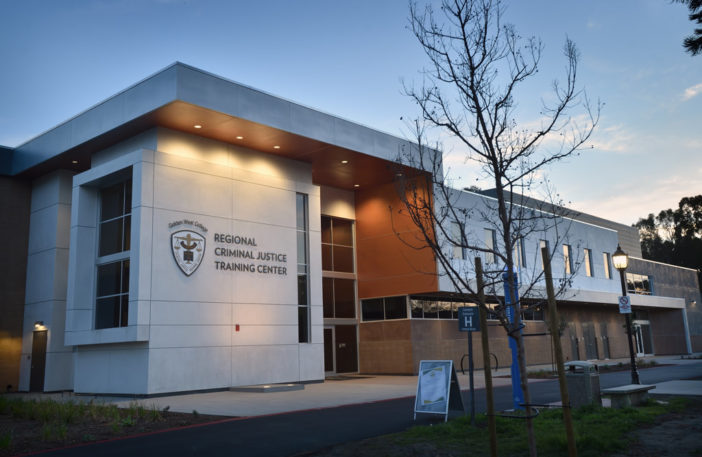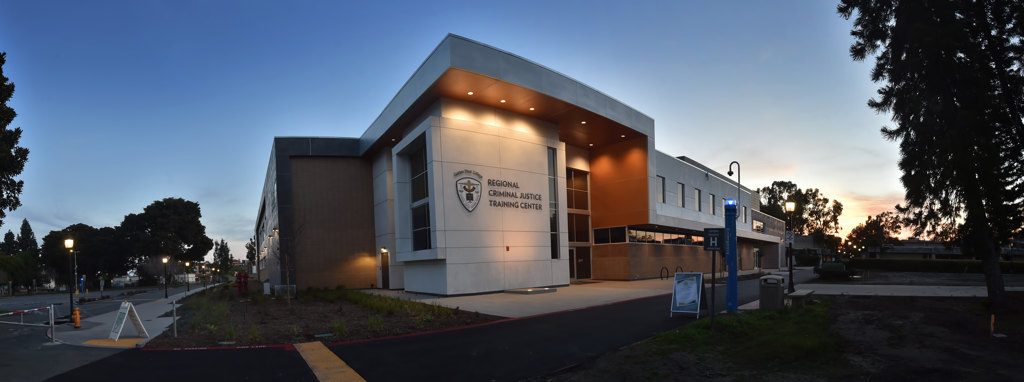The demands placed on today’s peace officers are more complex, and more dangerous, than at any other time.
With the proliferation of high-powered weaponry, the escalation of anti-police politics, an opioid epidemic and a growing mental health crisis, law enforcement personnel must be expert crisis counselors, excellent communicators and adept at handling sophisticated weapons.
Within the boundaries of the newly unveiled, ultramodern Criminal Justice Training Center (CJTC) at Golden West College, recruits have everything they need to prepare for a career that brings with it more responsibilities than most other professions.
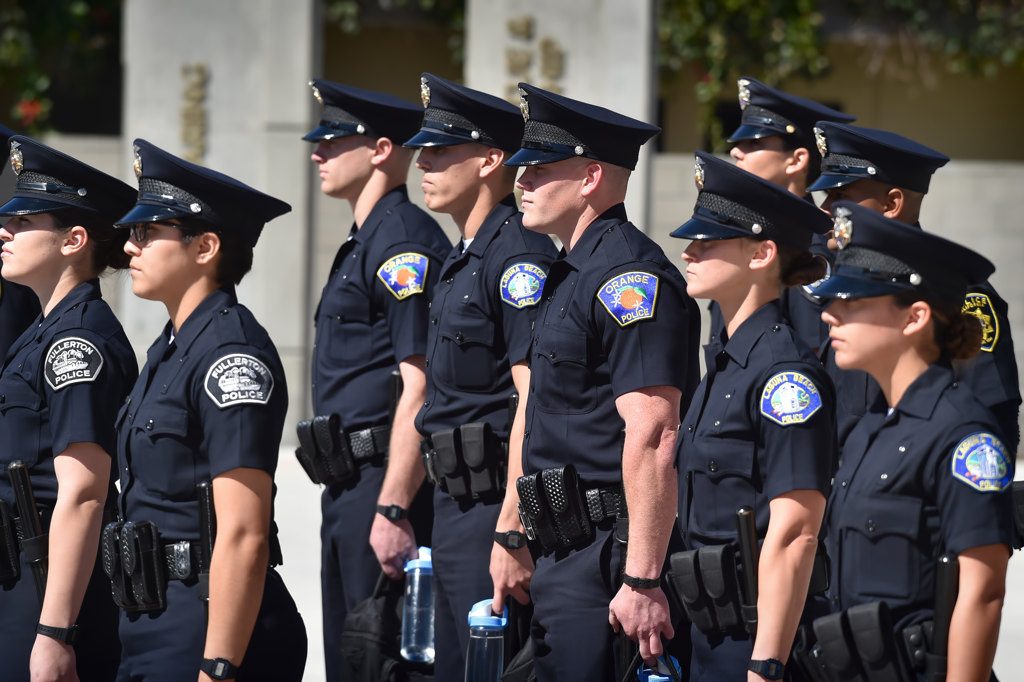
Recruits from various agencies line up in the center court before being dismissed for lunch at GWC’s new Regional Criminal Justice Training Center.
Photo by Steven Georges/Behind the Badge OC
The all-encompassing complex is a huge step up from the facility it replaces, which had served as the CJTC for nearly 50 years but no longer could meet the training demands for today’s peace officers.
“That one was good for what it was, but it can’t do what this does,” said Bruce Berman, director of the Golden West College Foundation. “We’ve managed to incorporate just about everything we can. If I were a student wanting to go into police work, this is where I would want to come to, not just because of the faculty and administration, but the facilities.”

Recruits walk out of GWC’s new Regional Criminal Justice Training Center on their way to a courthouse field trip.
Photo by Steven Georges/Behind the Badge OC
A grand opening ceremony for the center is being held 10:30 a.m. April 10.
The $25-million center, funded by voter-approved Measure M, features a 39,000-square-foot, two-story building housing seven classrooms, training labs, a community room, mat room and administrative offices.
The eco-friendly building also contains locker rooms and showers for both staff and recruits.
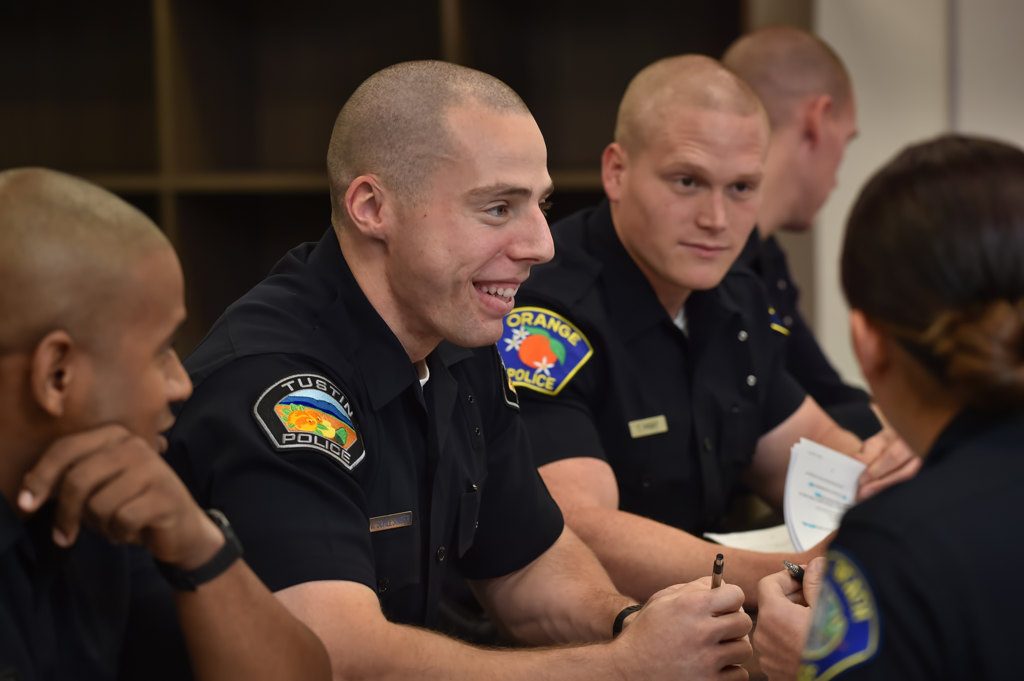
Tustin PD Recruit Josh Schlesinger and Orange PD Recruit Troy Wright, behind him, work with their fellow students during Capt. Jim Enright’s regular basic course at GWC’s new Regional Criminal Justice Training Center.
Photo by Steven Georges/Behind the Badge OC
The Scenario Village is a configuration of structures that replicate ones officers may come across on the streets. They include a storefront, a residence and an industrial building.
A Pull-Over Street, which will be used for pullover instruction, surrounds the Scenario Village and runs into a cul-de-sac, where vehicles can turn around and head back to the Scenario Village.
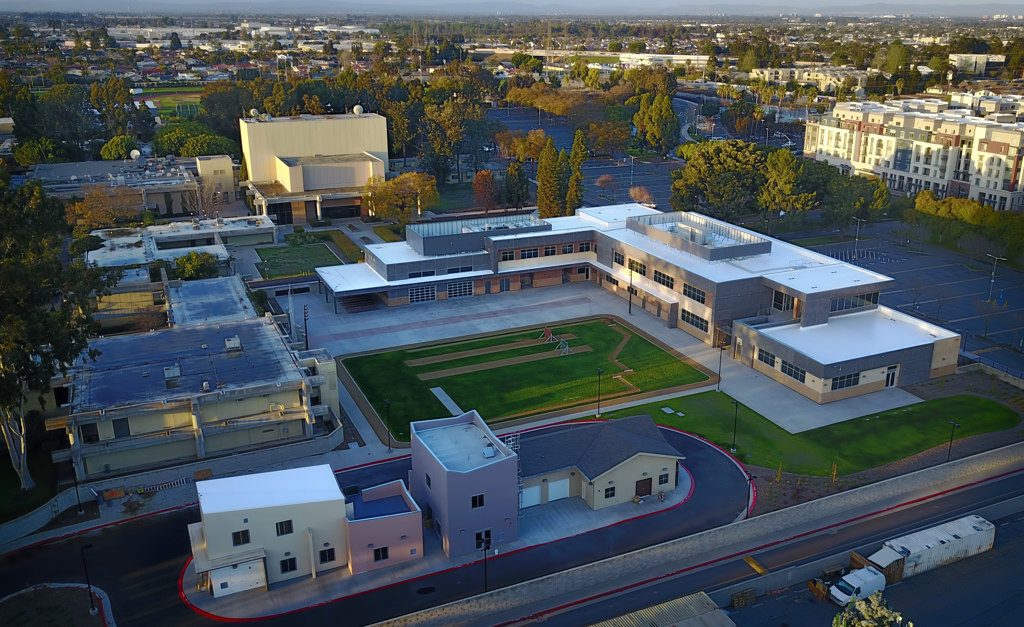
Golden West College’s new Regional Criminal Justice Training Center includes the Scenario Village, bottom of photo. A grand opening ceremony is scheduled for April 10 at 10:30 a.m.
Photo by Steven Georges/Behind the Badge OC
Situated in the courtyard adjacent to the L-shaped building is the Biddle course, where recruits will be put through a series of physical tests that include scaling a six-foot chain link fence and six-foot solid wall, a 99-yard foot pursuit and a 500-yard sprint.
Outside agencies also will use the Biddle course to test their applicants.
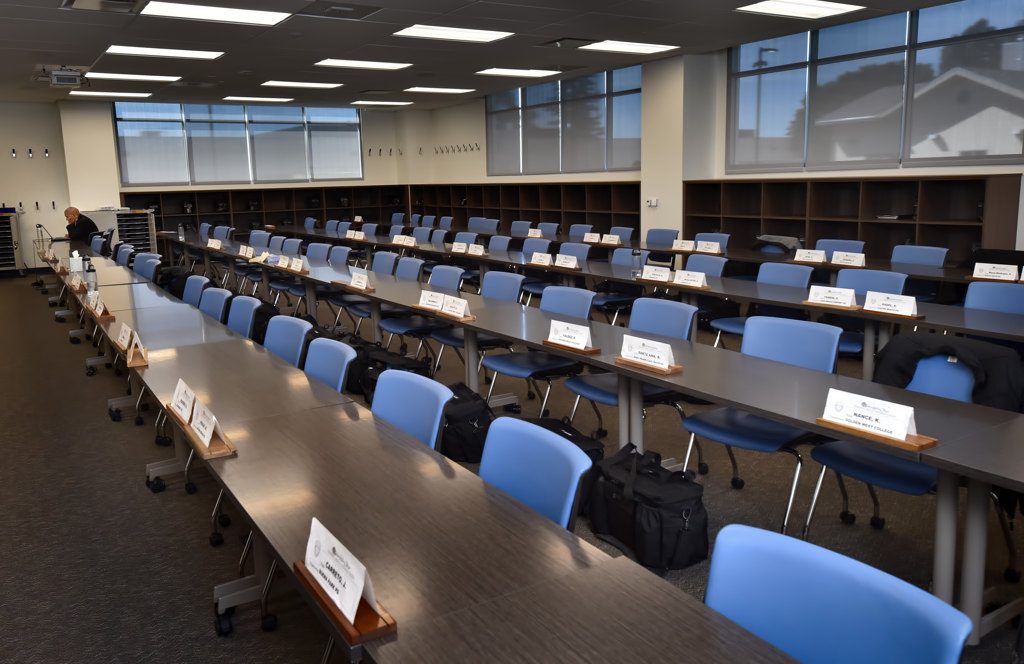
A recruit takes a final in a regular police academy classroom that holds about 80.
Photo by Steven Georges/Behind the Badge OC
The center also contains a Force Options Training Lab, where recruits and trainees will be presented with a variety of situations where the use of force may be an option — everything from shooting a gun, firing a Taser, using gas, wielding a baton or using no force at all.
“When we were going through the planning stages, we looked at artists’ renditions and artists’ sketches,” said Ron Lowenberg, dean of the CJTC and former Huntington Beach police chief. “We put a lot of time and energy in the planning of this facility, and we thought it was really going to turn out nice. Now that we are actually in it, not only is it pleasing to the eye, but it is operationally sound. It has exceeded our expectations.”
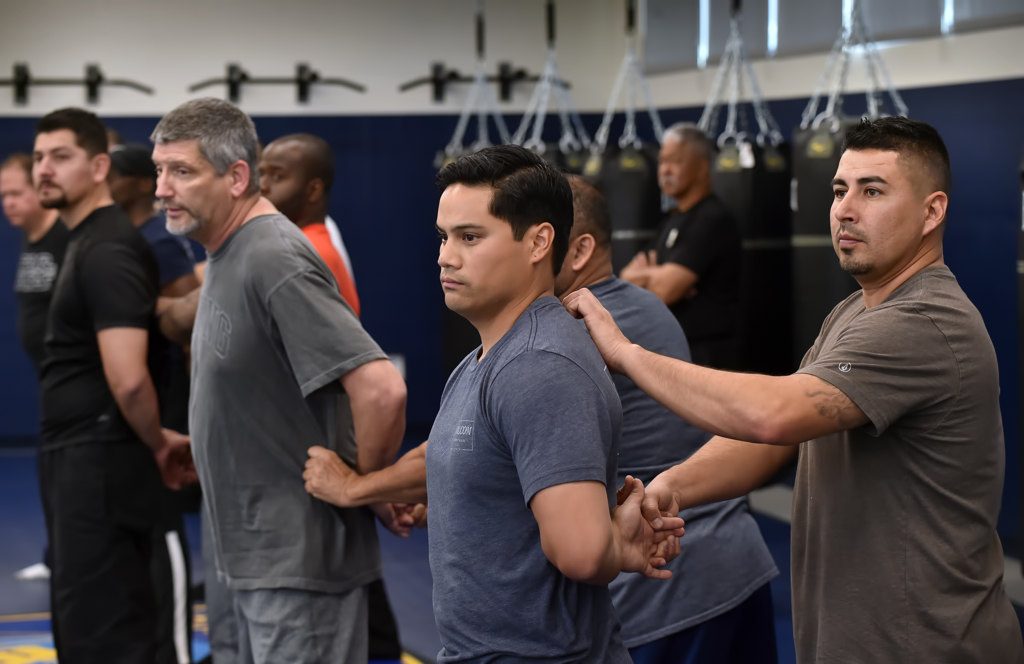
David Raposas and Mario Vallarta, front right, both from Palmdale, participate in a 832 PC Class for non-sworn personnel, as they learn how to search and control a suspect at Golden West College’s new Regional Criminal Justice Training Center.
Photo by Steven Georges/Behind the Badge OC
The CJTC serves up to 3,000 students per year, including recruits and current law enforcement personnel.
CJTC is the first college-based academy to be certified by the California Commission on Peace Officers Standards and Training. It offers a 24-week long Regular Basic Course, 17-week Special Investigators Basic Course, Continuing Professional Training courses and also houses a Leadership and Ethics Institute.
CJTC began in 1955 with a five-week course in the city of Orange before moving to the Orange County Fairgrounds in 1960.
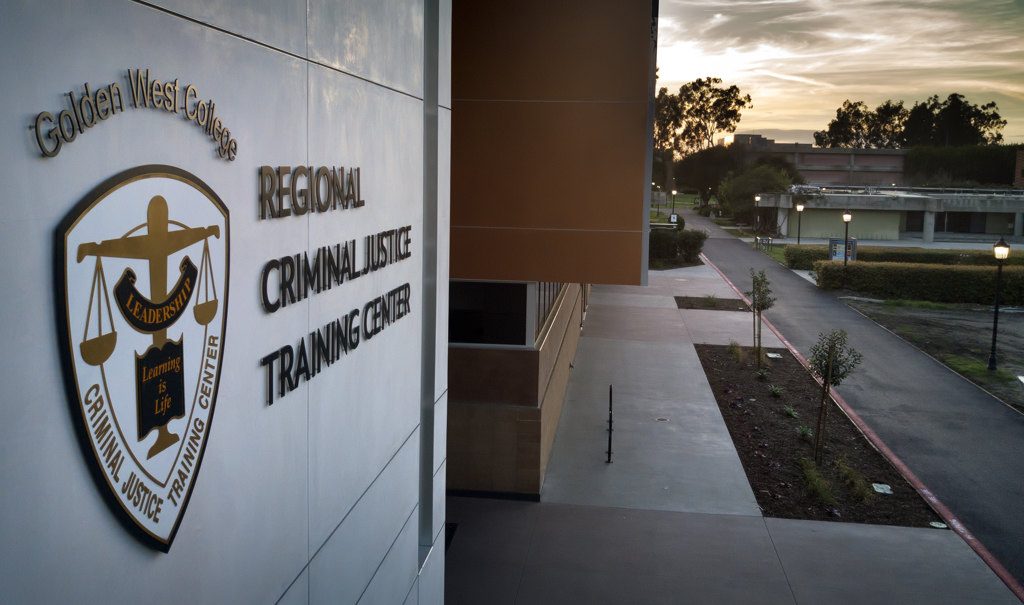
Golden West College’s new Regional Criminal Justice Training Center replaces the old police academy located on another part of the campus.
Photo by Steven Georges/Behind the Badge OC
In 1969, the academy relocated to Orange Coast College and then to its current location at Golden West College.
But, perhaps the most important element of the CJTC has nothing to do with classroom instruction or high-tech equipment.

Kevin Dedeaux, Santa Ana PD, retired, left, leads a 832 PC Class on arrest and search for non-sworn personnel at Golden West College’s new Regional Criminal Justice Training Center.
Photo by Steven Georges/Behind the Badge OC
It’s the Six Pillars of Character, embraced by the CJTC, that stand prominently in the courtyard: Trustworthiness, Respect, Responsibility, Justice and Fairness, Caring and Civic Virtue, and Citizenship.
Hundreds of CJTC graduates have advanced to command-staff positions and nearly 40 have served in top management positions. Three Orange County police chiefs are CJTC graduates.
“This facility wouldn’t have been built if we wouldn’t have had the reputation that we’ve gained over the years for doing such a fabulous job,” Lowenberg said.
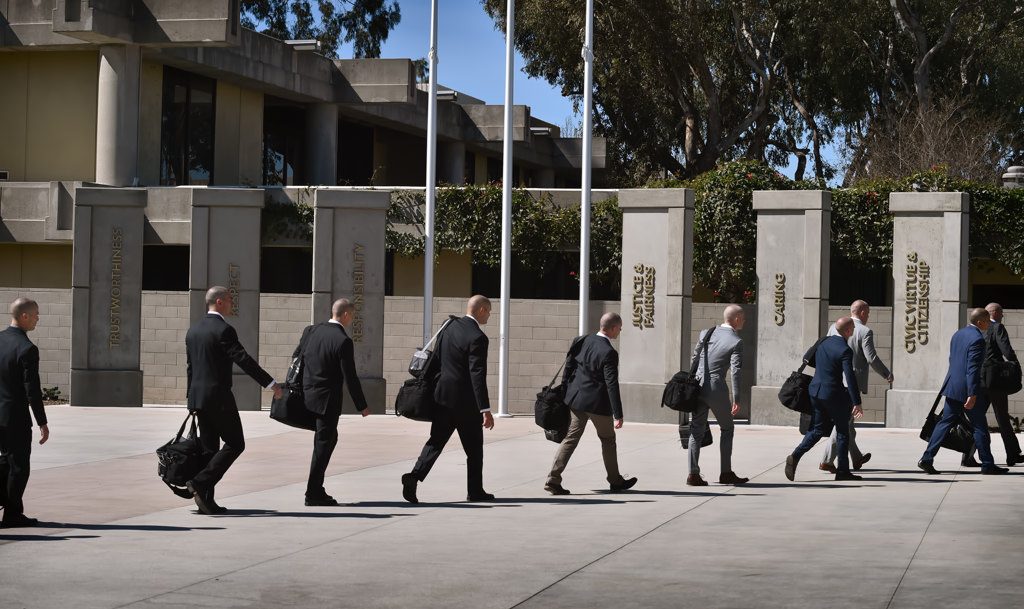
Recruits walk past the Six Pillars of Character — Trustworthiness, Respect, Responsibility, Justice & Fairness, Caring and Civic Virtue and Citizenship — on display in the center court of GWC’s new Regional Criminal Justice Training Center.
Photo by Steven Georges/Behind the Badge OC
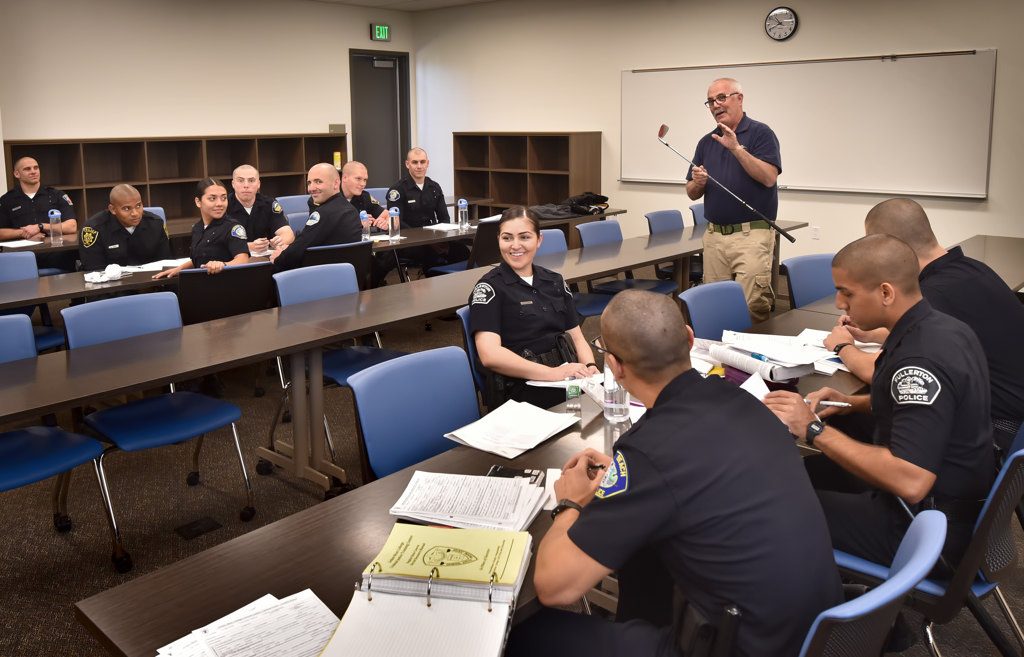
Capt. Jim Enright, retired La Palma PD, teaches a regular basic course at GWC’s new Regional Criminal Justice Training Center.
Photo by Steven Georges/Behind the Badge OC
 Behind the Badge
Behind the Badge
